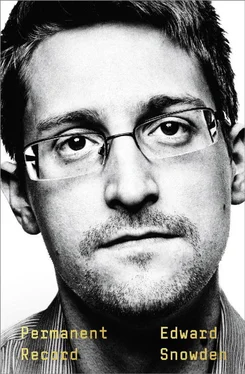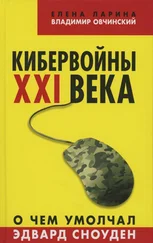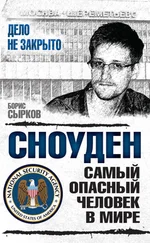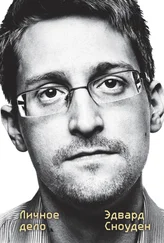As I read about events happening in Ouagadougou, Kinshasa, and other exotic cities I could never have found on a noncomputerized map, I realized that as long as I was still young I had to serve my country by doing something truly meaningful abroad. The alternative, I thought, was just becoming a more successful Frank: sitting at progressively bigger desks, making progressively more money, until eventually I, too, would be obsolesced and kept around only to handle the future’s equivalent of a janky tape machine.
It was then that I did the unthinkable. I set about going govvy.
I think some of my supervisors were puzzled by this, but they were also flattered, because the typical route is the reverse: a public servant at the end of their tenure goes private and cashes in. No tech contractor just starting out goes public and takes a pay cut. To my mind, however, becoming a govvy was logical: I’d be getting paid to travel.
I got lucky, and a position opened up. After nine months as a systems administrator, I applied for a CIA tech job abroad, and in short order I was accepted.
My last day at CIA Headquarters was just a formality. I’d already done all my paperwork and traded in my green badge for a blue. All that was left to do was to sit through another indoctrination, which now that I was a govvy was held in an elegant conference room next to the cafeteria’s Dunkin’ Donuts. It was here that I performed the sacred rite in which contractors never participate. I raised my hand to swear an oath of loyalty—not to the government or agency that now employed me directly, but to the US Constitution. I solemnly swore to support and defend the Constitution of the United States against all enemies, foreign and domestic.
The next day, I drove my trusty old Honda Civic out into the Virginia countryside. In order to get to the foreign station of my dreams, I first had to go back to school—to the first sit-in-a-classroom schooling I’d ever really finish.
My first orders as a freshly minted officer of the government were to head for the Comfort Inn in Warrenton, Virginia, a sad, dilapidated motel whose primary client was the “State Department,” by which I mean the CIA. It was the worst motel in a town of bad motels, which was probably why the CIA chose it. The fewer other guests, the lower the chances that anybody would notice that this particular Comfort Inn served as a makeshift dormitory for the Warrenton Training Center—or, as folks who work there call it, the Hill.
When I checked in, the desk clerk warned me not to use the stairs, which were blocked off by police tape. I was given a room on the second floor of the main building, with a view of the inn’s auxiliary buildings and parking lot. The room was barely lit, there was mold in the bathroom, the carpets were filthy with cigarette burns under the No Smoking sign, and the flimsy mattress was stained dark purple with what I hoped was booze. Nevertheless, I liked it—I was still at the age when I could find this seediness romantic—and I spent my first night lying awake in bed, watching the bugs swarm the single domed overhead light fixture and counting down the hours to the free continental breakfast I’d been promised.
The next morning, I discovered that on the continent of Warrenton, breakfast meant individual-size boxes of Froot Loops and sour milk. Welcome to the government.
The Comfort Inn was to be my home for the next six months. My fellow Innmates and I, as we called ourselves, were discouraged from telling our loved ones where we were staying and what we were doing. I leaned hard into those protocols, rarely heading back to Maryland or even talking to Lindsay on the phone. Anyway, we weren’t allowed to take our phones to school, since class was classified, and we had classes all the time. Warrenton kept most of us too busy to be lonely.
If the Farm, down by Camp Peary, is the CIA’s most famous training institution, chiefly because it’s the only one that the agency’s PR staff is allowed to talk to Hollywood about, the Hill is without a doubt the most mysterious. Connected via microwave and fiber optics to the satellite relay facility at Brandy Station—part of the Warrenton Training Center’s constellation of sister sites—the Hill serves as the heart of the CIA’s field communications network, carefully located just out of nuke range from DC. The salty old techs who worked there liked to say that the CIA could survive losing its headquarters to a catastrophic attack, but it would die if it ever lost Warrenton, and now that the top of the Hill holds two enormous top secret data centers—one of which I later helped to construct—I’m inclined to agree.
The Hill earned its name because of its location, which is atop, yes, a massive steepness. When I arrived, there was just one road that led in, past a purposely under-marked perimeter fence, and then up a grade so severe that whenever the temperature dropped and the road iced over, vehicles would lose traction and slide backward downhill.
Just beyond the guarded checkpoint lies the State Department’s decaying diplomatic communications training facility, whose prominent location was meant to reinforce its role as cover: making the Hill appear as if it’s merely a place where the American foreign service trains technologists. Beyond it, amid the back territory, were the various low, unlabeled buildings I studied in, and even farther on was the shooting range that the IC’s trigger pullers used for special training. Shots would ring out, in a style of firing I wasn’t familiar with: pop-pop, pop; pop-pop, pop . A double-tap meant to incapacitate, followed by an aimed shot meant to execute.
I was there as a member of class 6-06 of the BTTP, the Basic Telecommunications Training Program, whose intentionally beige name disguises one of the most classified and unusual curricula in existence. The purpose of the program is to train TISOs (Technical Information Security Officers)—the CIA’s cadre of elite “communicators,” or, less formally, “commo guys.” A TISO is trained to be a jack-of-all-trades, a one-person replacement for previous generations’ specialized roles of code clerk, radioman, electrician, mechanic, physical and digital security adviser, and computer technician. The main job of this undercover officer is to manage the technical infrastructure for CIA operations, most commonly overseas at stations hidden inside American missions, consulates, and embassies—hence the State Department connection. The idea is, if you’re in an American embassy, which is to say if you’re far from home and surrounded by untrustworthy foreigners—whether hostiles or allies, they’re still untrustworthy foreigners to the CIA—you’re going to have to handle all of your technical needs internally. If you ask a local repairman to fix your secret spy base, he’ll definitely do it, even for cheap, but he’s also going to install hard-to-find bugs on behalf of a foreign power.
As a result, TISOs are responsible for knowing how to fix basically every machine in the building, from individual computers and computer networks to CCTV and HVAC systems, solar panels, heaters and coolers, emergency generators, satellite hookups, military encryption devices, alarms, locks, and so on. The rule is that if it plugs in or gets plugged into, it’s the TISO’s problem.
TISOs also have to know how to build some of these systems themselves, just as they have to know how to destroy them—when an embassy is under siege, say, after all the diplomats and most of their fellow CIA officers have been evacuated. The TISOs are always the last guys out. It’s their job to send the final “off the air” message to headquarters after they’ve shredded, burned, wiped, degaussed, and disintegrated anything that has the CIA’s fingerprints on it, from operational documents in safes to disks with cipher material, to ensure that nothing of value remains for an enemy to capture.
Читать дальше












